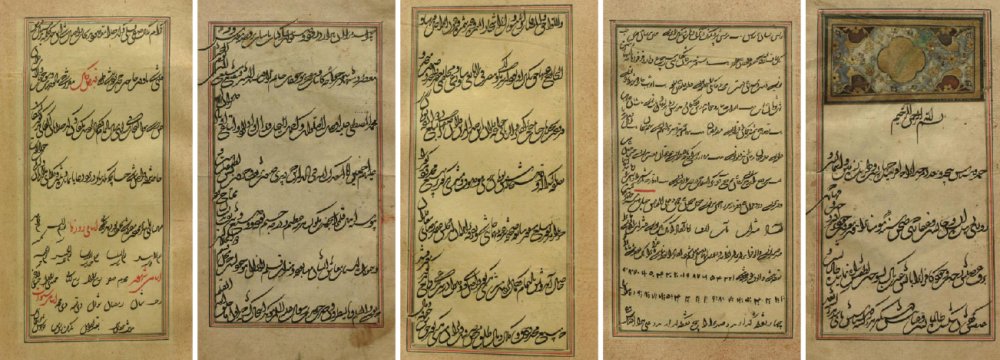Researchers in manuscripts and rare books will no longer have to be present at the National Library of Iran to find answers to their queries or to search for information.
The Manuscripts Department at the library has been equipped with a digital system to answer questions posed by researchers, reported the website lisna.ir, which specializes in bibliography.
The department will reply to the queries online within one to five days. The service will be provided from Saturday through Wednesday.
The information required will be retrieved from the library resources and delivered to the person making the enquiry as per the regulations and policies approved by the National Library.
3 Methods
At the online reference website of the National Library of Iran (nlai.ir), researchers can put their questions in different ways. The most convenient is by email. Queries answered by email come with the reference codes that will help researchers find the resources. They can also specify the language of their desired source of information as well as whether they want material from books, articles, theses, non-bibliographic, online sources and documents.
The second is by SMS and the query of course should be brief and would entail a short reply. The third way is by live chat and the service is available between 10 am and 12 noon on all working days.
Treasury Trove
The manuscripts at the Iranian National Library are one of the most invaluable assets of the country. They include a treasury of knowledge in philosophy and mysticism, Islamic jurisprudence and principles, medicine and astronomy, both in Farsi and Arabic.
Some of the books are unique and priceless. The department also houses the first Persian translations of European books. There are collections of works and calligraphies by famous masters of the art such as calligraphers Darvish Abdol Majid Taleqani (1737-1771), his follower Seyyed Ali Akbar Golestaneh (1858-1901), Emadol Kottab (1861-1936), Zeynol Abedin Esfahani (1773-1879), Qajar-era painter and poet Ali Asgar Arsanjani, Safavid-era calligrapher Ahmad Neyrizi and poet and calligrapher Vessal Shirazi (1782-1845), which are among the most precious items in the manuscripts section.
Lithographic Books
In 1995, a collection of lithographic books was separated and placed in an exclusive trove. A cumulative digital databank including microfilms and scans of the lithographic books has been completed.
Currently, over 13,000 volumes of lithographic books in Persian, Arabic, Urdu and Turkic comprise the collection. They include books from the science libraries of the Pahlavi era and those donated by the families of Professor Seyyed Fakhroddin Shadman (1907-1967) who was also a politician; politician of late Qajar era and early Pahlavi period Seyyed Mehdi Farrokh (1849-1934), and most recently by the family of Shia scholar and clergy Sheikh Ja’afar Shoushtari (1815-1886).
Over 95% of the lithographic books have been identified and listed. Of this number 7,725 are in Persian; 4,025 are in Arabic; 1,116 are in both Persian and Arabic; 93 in Urdu and 58 in Turkic.
Handwritten Documents
There are around one million pages of handwritten documents in the manuscripts collection. So far, 11,500 pages of such documents have been listed and another 50,000 have been registered.
This is the most precious collection of manuscripts and historic documents in Iran and includes around 300 decrees by the Safavid and Qajar kings and princes. The oldest decrees in the collection are those issued by Shah Tahmasb I of the Safavid dynasty (1514-1576).
The decorative arts used on the decrees of Nassereddin Shah of Qajar dynasty (reigning between 1848 and 1896) are among the most beautiful examples of document gilding in Iran.
The trove also houses a sub-collection of documents written by Nassereddin Shah himself, which is unique in its kind. Another large part of the collection contains manuscript documents originally kept at court archives of the Qajar dynasty. A review of the collections at the National Library can tell much about the contemporary history of Iran.





